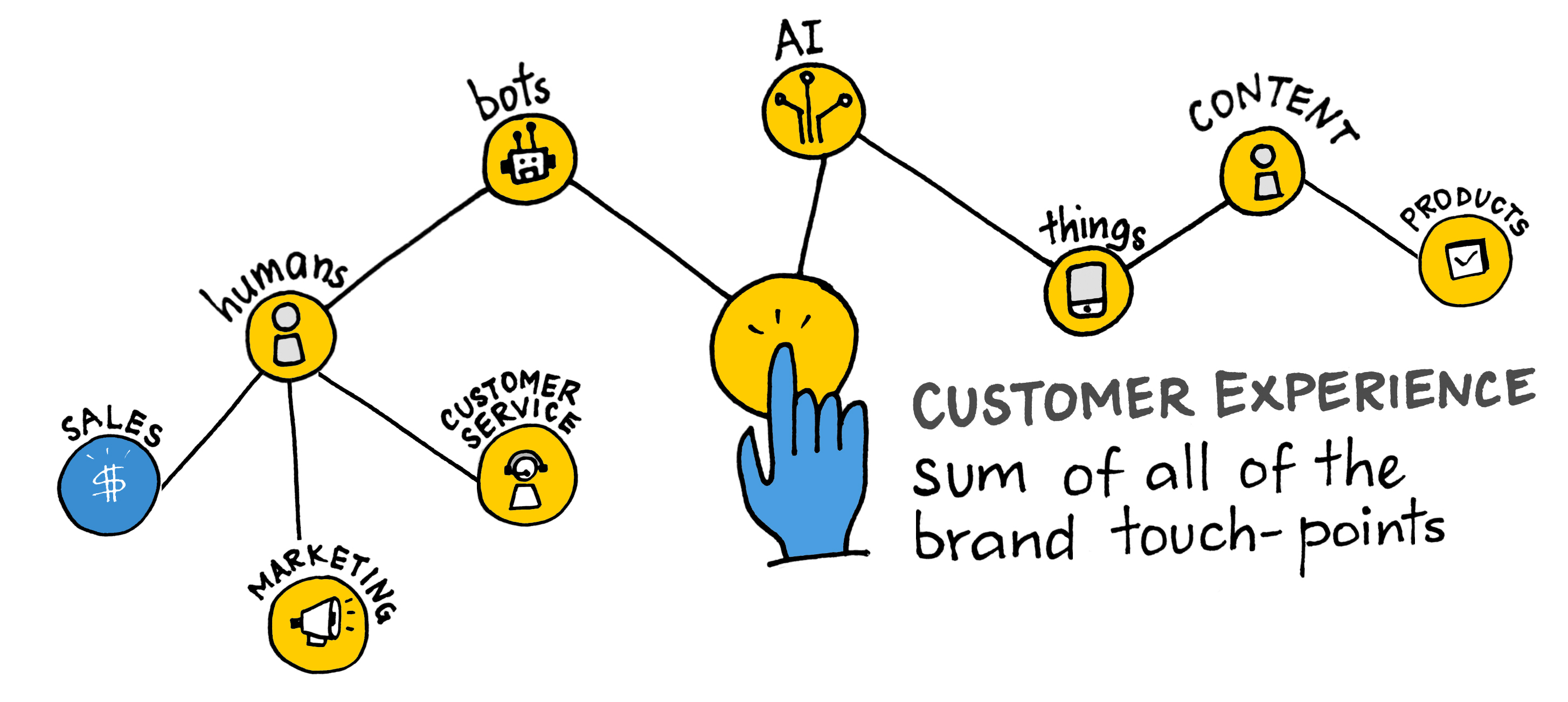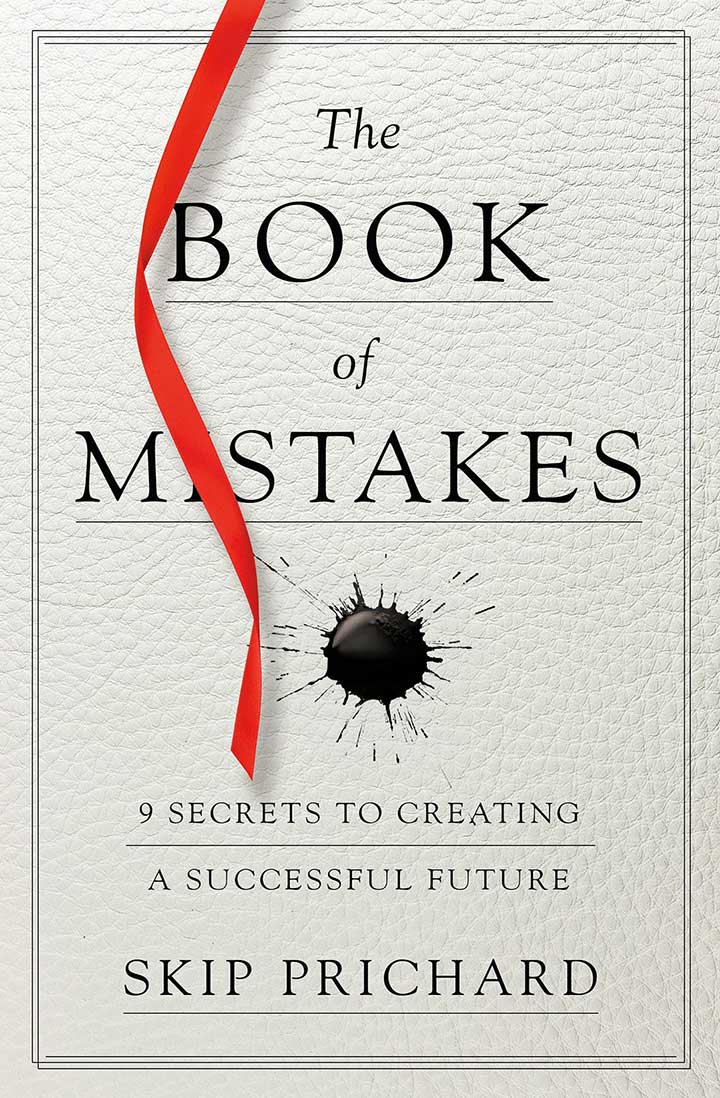Grow Your Company with Confidence
How organizations keep growing in the face of stiff competition, a fast-changing business environment, constant innovation, and technology changes is a constant issue for executives. In Growth IQ: Get Smarter About the Choices that Will Make or Break Your Business, Tiffani Bova shares ten simple paths to growth in this environment.
Tiffani Bova is the global customer growth and innovation evangelist at Salesforce. Her work over the last twenty years spans startups to the Fortune 500. I recently spoke with her about her work.
Common Growth Mistakes
What are some of the common mistakes leaders make when trying to reenergize growth?
One of the most vexing challenges faced by executives is determining how best to grow their business. Unfortunately, these challenges to grow have multiplied in recent years. The problem is that too many companies respond to a competitive threat, or a market disruption, with a strategic business model that worked in the past and may not work in the future. Growth strategy is a thinking game that works when you have the right mindset to inform the when, where and why of every strategic move you make. I have yet to find a company that can attribute their growth to one silver bullet. The impact of combining multiple efforts will be greater than the sum of its parts. Reenergizing growth starts with being open to getting uncomfortable with the status quo and comfortable with change.
Why do companies so often fail to duplicate a growth strategy from an industry rival?
Too many companies ‘benchmark’ their company against their rival or a set of competitors in the same industry. While benchmarking can be a worthwhile exercise, it can also lend itself to a limited view of what is happening in the overall market. Widening the lens to look at overall context, on the other hand, allows companies to look for best practices from other sectors and learn from innovation happening across industries. What is happening in consumer spending patterns? What technology advancements have happened which you can capitalize on? How are people engaging with brands? What is the sentiment towards big social issues? The insights we can glean from these questions are invaluable when setting a growth strategy.
Furthermore, benchmarking is an outside-in view focused mostly on products and business models. Meaning, you are only able to understand their business from an outsider’s perspective. It is the inner workings, or the mental model, of a company’s growth strategy that is their ‘secret sauce’ – it is what differentiates them from each other especially in highly competitive markets. The fact is, companies rarely have the same products, customers, value propositions or go-to-market strategies or more importantly, culture. So, attempting to replicate another company’s strategy, may sound like a good plan, yet rarely delivers expected results, or worse it could backfire and have long-term negative impact on the company overall. There are exceptions to this statement of course, especially in highly commoditized industries where ‘price’ is what companies compete on, but any value-based product will require more than that as a solid growth strategy.
The Challenge of Customer Experience
Of the ten growth paths you share, customer experience you say is the most rewarding. Why is this? How do leaders best improve it?
While the customer experience path may ultimately be the most rewarding of the ten growth paths, especially for the customer, it is also often one of the most difficult to pull off. Customer experience (CX) is centered on the interactions between companies and their customers. A brand promise is what you say about your company; customer experiences will impact what they – customers – say about your company. In principle, customer experience is based on the feelings that arise once customers engage with your products, employees, and various sales, service and marketing channels. Current research shows that more than 70 percent of customers look to (customer) “reviews” as the number one source when they are deciding among different brands and products. That is why this path can be so unforgiving. Creating a poor experience for your customers has long term ramifications to a brand. Your greatest sales force can be your customers advocating on your behalf. Yet the opposite is true as well. Customers will remember negative experiences, share them online and with friends, and you are then faced with an entirely different challenge to reestablish your brand as a company that customers would want to engage with.
For some companies, transforming CX requires modest adjustments. For others, the aspiration to improve CX may mean, at least in the short term, that they need to reevaluate all aspects of the business. Either way, transforming CX requires complete company buy-in. It must first start with the willingness to make the necessary, and sometimes difficult changes. Then, and only then, will it translate into an overall mission – a “true north” for the company to rally around.

Would you share another one of the paths and a standout example?
Unless you’re a small family business determined to stay small, or you are unable to take on more financial risk and workload along with their associated hiring demands, the quest for growth is never ending. It is all too common of a question: “How can I grow my business?” What’s interesting is when I have been asked that question by executives, they would always focus on what they were doing to drive new customer acquisition, rarely, and I mean rarely, did they provide equal insights into what they were doing to stimulate sales from the existing base of customers they already had. The Customer Base Penetration Path is all about ensuring that companies not only allocate sales resources and marketing dollars toward acquisition programs, but also to upsell, cross-sell, or provide loyalty programs so that you don’t alienate your base.
The facts are quite illuminating. Acquiring a new customer is anywhere from five to twenty-five times more expensive than retaining an existing one. The probability of selling to an existing customer is 60-70 percent, whereas, the probability of selling to a new prospect is 5-20 percent. If you’re not careful, ignoring your customer base will lead to a growth stall. If you gain a customer once, you should do everything you can to keep that customer happy and buying more from you.
Have you seen leaders pursuing too many paths at once?
Consider the story of Starbucks in its darkest days. In 2007, Starbucks was a company in trouble, its stock tumbling, competitors challenging on every front, and both customers and employees exhibiting declining loyalty and morale. The cause? Ironically, the greatest success story of the coffee age had lost, well…its soul. It had actually grown too fast and, in doing so, put a tremendous strain on the entire organization.
Between 1987 and 2007, Starbucks opened an average of two locations each day, an increasing percentage of which were outside the United States. It pursued the Market Acceleration path with store counts tripling to nine thousand locations in 2000. It more than doubled its revenue to more than $5 billion in fiscal 2004. By 2007, the company had roughly thirteen thousand locations worldwide. In combination with Market Acceleration, Starbucks also pursued the Product Expansion and Customer and Product Diversification growth paths – adding snacks, healthy foods, CDs, gifts, and other retail items designed to further monetize its customers.
While that might sound like amazing results, unfortunately, although Starbucks was seeing top-line growth, all that growth came with an unexpected price tag. The rapid pace of change, explosion of product offerings, and store openings managed to alienate just about everyone…existing loyalists, new customers and most of all employees. Starbucks found itself in a full-blown growth stall. Howard Schultz returned as CEO in 2008, saying: “The most serious challenge we face is of our own doing. We became less passionate about customer relationships (CX) and the coffee experience. We spent time on efficiency rather than experience.”
This hyper focus on growth, without regard for the implications to the rest of the business often happens when companies pursue too many paths at once. In this case, a brand as strong as Starbucks had lost its way in an area they are know for: customer experience. It was only until they were willing to step back and look at what got them in this unexpected position that they realized they had done it to themselves.

When to Jump to Another Path
How do leaders know when it’s time to try a new one?
Knowing when to jump to another path is just as important, if not more important, as determining which path to pursue in the first place. The key to operating any of the ten growth paths is to ride them until you have wrung out every ounce of revenues, profits and market development and then make the (next) leap – that is, when the growth curve of the path begins to plateau, when you still have maximum momentum, not when the financials have begun to flatten – or worse, to fall – and the company starts to stall, lose customer, and see the departure of key talent.
How do you know if your current growth path is about to stall, before it does? The answer? Establish metrics for your company’s health and put systems in place to monitor those metrics. The trick here is to pay attention to what the metrics and data are telling you. If you begin to see a slowdown in a particular product or customer segment, is it an anomaly or an early indication of further trouble ahead? If you are willing to ask that question sooner rather than later, you can begin to prepare yourself for the next growth path. That allows you to come from a place of strength – you are still growing, albeit a bit slower than previous months or quarters. If you wait, you may find yourself in a defensive position, in a full-blown growth stall, which may have you cutting costs and resources which makes it much more difficult to try new things. Use the benefits of growth to fund, test and learn what growth path may be the most appropriate to pursue next, that way you can use the combination of paths to create momentum in the business you wouldn’t have otherwise.
10 Growth Paths
- Customer experience
- Customer base penetration
- Market acceleration
- Product expansion
- Customer and product diversification
- Optimize sales
- Churn (minimize defection)
- Partnerships
- Co-opetition
- Unconventional Strategies
© Tiffani Bova. For more information, see her terrific book Growth IQ.
Growth is a Thinking Game
Would you share your perspective on “high velocity decision making” and how to develop it within an organization?
As I have said, growth is a thinking game, and making decisions is at the center of any successful (growth) strategy. The order in which companies do things actually has a great deal to do with the likelihood of success. Many now say “speed is the new currency,” but I only somewhat agree. You have to take action fast, but not so fast that the quality and execution are negatively impacted. Sometimes you have to slow down to speed up. Executives have to find ways to give people permission to make decisions, and if they aren’t the right ones, learn from them, course correct and move on. Rewarding failure may sound counterintuitive, but trial and error is the fastest way to the right answer. People have to trust that the company supports ‘high velocity decision making’ even when things don’t go right.
The Importance of Culture
In your research, how important is corporate culture to successful growth? What are some of the deliberate practices you’ve seen help?
I believe one of the biggest challenges facing large established companies with a whole lot of history is that it is almost impossible for them to move out of “what was” and move into “what could be.”
When asked what slows growth, it might surprise you to learn that most executives actually cite internal factors. In a Bain & Company study, 85 percent of the executives surveyed, and a full 94 percent of those running companies with more than $5 billion in revenue, said that internal, not external, obstacles keep their companies from growing profitably. What a shame; after all, it is the internal factors over which you are supposed to have control– as opposed to moves by your competitors, market shifts, and even “Black Swan” events. For me, the backbone of corporate growth is personal growth. Personal growth of the leadership team, middle management and all the employees. Without a strong culture, without complete alignment of what the company stands for, what’s its goals are and empowering its people to do what’s right for the customers and the company – without all those things, choosing the right growth path(s) won’t matter.
For more information, see Growth IQ: Get Smarter About the Choices that Will Make or Break Your Business.



